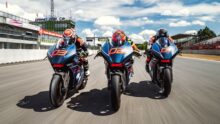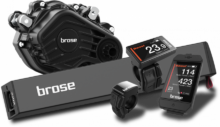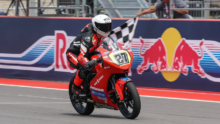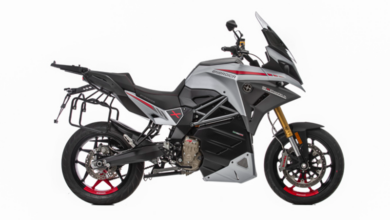AMA to induct seven members into the Motorcycle Hall of Fame
The American Motorcyclist Association has announced that Pierre Karsmakers, Tom White, George Barber, Scott Summers, Mike “The Rock” LaRocco, Rob Muzzy and Byron Hines will represent the 2014 Motorcycle Hall of Fame class.
Pierre Karsmakers, European motocross champion
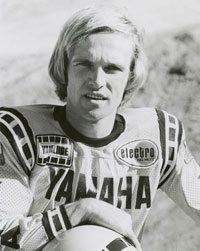 “Pierre showed Americans what motocross was all about,” said Ken Ford, a member of the Hall of Fame executive committee and treasurer of the American Motorcyclist Association board of directors. “From his performance on the track to his training regimen, he demonstrated a firm resolve to wring the most from himself and his machines.”
“Pierre showed Americans what motocross was all about,” said Ken Ford, a member of the Hall of Fame executive committee and treasurer of the American Motorcyclist Association board of directors. “From his performance on the track to his training regimen, he demonstrated a firm resolve to wring the most from himself and his machines.”
Karsmakers said he was honored by his election.
“It’s been a long time since I raced, so it means a lot that America still recognizes me as one who brought motocross to the United States,” Karsmakers said during a recent telephone interview from his home in The Netherlands.
A three-time motocross champion in his native Holland, Karsmakers came to the United States to gain wider exposure and attract the attention of the Japanese motorcycle makers. ”
All the Japanese (sponsorship) contracts were going to Belgian riders,” Karsmakers said. “I got mad, because other European riders were not getting noticed. But after I started winning in 1972, it began to open doors.”
Racing for Yamaha in 1973, Karsmakers won the 500cc motocross national championship series, scoring 2,659 total points. The second-place racer scored 1,427.
Karsmakers also was winner of the inaugural AMA Supercross Championship in 1974. He retired from racing in 1979.
“That was a great time of my life,” Karsmakers said. “I met many wonderful people.”
Tom White, acclaimed racer and White Brothers Cycle Specialties founder
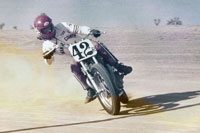 “Few have done more to advance the sport of motocross racing, and the history of motocross racing, than Tom White,” said Ken Ford, a member of the Hall of Fame executive committee and treasurer of the AMA board of directors. “By virtue of his early racing success, his long and successful career in motorcycling, his personal dedication to promoting both the past and present of this great sport and his selfless dedication to the Hall of Fame on the American Motorcycle Heritage Foundation board, Tom White is personally responsible for improving the experience and opportunity for motocross racers and motorcyclists of all ages.”
“Few have done more to advance the sport of motocross racing, and the history of motocross racing, than Tom White,” said Ken Ford, a member of the Hall of Fame executive committee and treasurer of the AMA board of directors. “By virtue of his early racing success, his long and successful career in motorcycling, his personal dedication to promoting both the past and present of this great sport and his selfless dedication to the Hall of Fame on the American Motorcycle Heritage Foundation board, Tom White is personally responsible for improving the experience and opportunity for motocross racers and motorcyclists of all ages.”
White first tasted motorcycling at the age of 15. By the time he was in his early 20s, White was ranked among the top 100 motorcycle racers in America, earning AMA National No. 80. Soon after, he founded White Brothers Cycle Specialties in 1975, which became one of the top off-road motorcycle accessory companies in America. When White sold the company in 2000, the firm listed more than 30,000 items.
Today, White feeds his passion by racing motocross, as a race announcer, and as owner and curator of the Early Years of Motocross Museum in in Villa Park, Calif., which features 160 motorcycles and related displays.
“There is no higher honor in motorcycling than being inducted into the AMA Motorcycle Hall of Fame,” White said. “This is special because it comes from your peers in the industry and existing Hall of Famers. I am humbled to think that my heroes, these great people of the sport, believe that I’m worthy of this acknowledgement of my life and career. It’s a real testimony that if you love motorcycling enough, sooner or later people will notice.”
White’s lasting contributions also include the Edison Dye Motocross Lifetime Achievement Award, which recognizes the person or persons who have made the largest impact on the growth of motocross in America, and creating the World Veteran MX Championship and the World Four-Stroke Championship, which has become the World Two-Stroke Championship.
“I’ve always had the attitude that we as an industry need to work together for a common goal, and that’s to make this activity of motorcycling so cool that everyone wants to do it,” White said. “I’m probably most proud for carrying on after the sale of my company. I’ve been able to spend a lot of positive energy to promote the sport. One of my goals has been to make more of today’s motorcyclists more appreciative and aware of the pioneers and trailblazers of the past, and I’m blessed that I’ve been in a position where I’ve been able to do that.”
White expressed his appreciation to those who nominated and elected him to the Hall of Fame.
“I’m just very thankful to everyone who played a part in this recognition,” White said. “You look at the Hall of Fame, and you look at the people who are in the Hall of Fame, and you realize the significance of it. You come to realize that when your name gets added to that wall, it will go on for generations. It’s just such a huge tribute, and I really don’t know what it’s going to feel like when that happens. Besides being married to the love of my life and the birth of my children, this is one of the most wonderful things that has happened to me.”
George Barber, Barber Vintage Motorsports Museum and Barber Motorsports Park founder
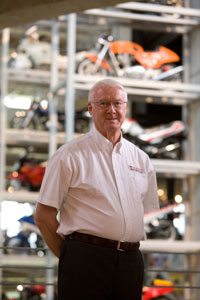 “George Barber’s incredible collection of motorcycles at his museum, as well as his world-class racing facility, are evidence of a love for the history of motorcycling and an appreciation for the passion we all share,” said Ken Ford, a member of the Hall of Fame executive committee and treasurer of the American Motorcyclist Association board of directors. “His significant investment of time, energy and money has produced a world-class shrine to the design, manufacture and enjoyment of motorcycles.”
“George Barber’s incredible collection of motorcycles at his museum, as well as his world-class racing facility, are evidence of a love for the history of motorcycling and an appreciation for the passion we all share,” said Ken Ford, a member of the Hall of Fame executive committee and treasurer of the American Motorcyclist Association board of directors. “His significant investment of time, energy and money has produced a world-class shrine to the design, manufacture and enjoyment of motorcycles.”
Barber said his first reaction on learning of his Hall of Fame election was “disbelief.” “I know that there are so many great people in the Hall of Fame that I wondered, ‘How in the hell did I get in?'” Barber said. “It truly is an honor.”
Barber’s early interest in motor vehicles manifested itself in Porsche racers during the 1960s, when he wrenched his own cars and notched 63 first-place finishes.
But he became intrigued with motorcycles, especially the variety of ways different designers and engineers chose to solve similar problems.
He began collecting motorcycles and decided to open a museum when the collection reached about 60, he said.
Today, the world-renowned Barber Vintage Motorsports Museum holds a collection of more than 1,400 motorcycles, with more than 700 on display at any given time, Barber said. The museum also houses a collection of vintage racecars, including 43 Lotuses.
Each year, “several hundred thousand” people visit the 830-acre Barber Motorsports Park that includes a state-of-the-art 2.38-mile road racing track.
Scott Summers, nine-time AMA national off-road racing champion
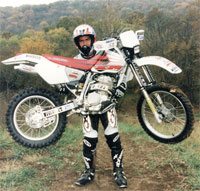 “Scott Summers not only won off-road championships in some of the most challenging tight woods terrain, but he did so his way — competing on a motorcycle that most others appreciated for its proficiency in wide-open desert racing,” said Ken Ford, a member of the Hall of Fame executive committee and treasurer of the AMA board of directors. “Scott won and thrived, becoming one of the most prolific off-road champions in AMA-sanctioned national championship competition, and in the process helped introduce a new level of professionalism to off-road racing in America.”
“Scott Summers not only won off-road championships in some of the most challenging tight woods terrain, but he did so his way — competing on a motorcycle that most others appreciated for its proficiency in wide-open desert racing,” said Ken Ford, a member of the Hall of Fame executive committee and treasurer of the AMA board of directors. “Scott won and thrived, becoming one of the most prolific off-road champions in AMA-sanctioned national championship competition, and in the process helped introduce a new level of professionalism to off-road racing in America.”
Summers, from Petersburg, Ky., won the 1990, 1991 and 1992 Grand National Cross Country championships racing a Honda XR600R against riders on much lighter and more agile motorcycles. After a three-year GNCC dry spell, Summers reclaimed the AMA national No. 1 plate in 1996 and successfully defended his title the following year. Summers also won four AMA Harescrambles National Championships in 1990, 1991, 1993 and 1995. In addition, he collected three gold medals competing for the U.S. team at the International Six Days Enduro.
“I’m humbled and honored, but to be honest, I feel like any success I achieved was a result of a group effort,” Summers said. “I was surrounded by some visionary people who contributed to my racing — my dad, Wade, was instrumental in persuading me that four-strokes could be competitive and my friend, Fred Bramblett, was my mechanic, my business manager, my agent and my publicist. I was blessed in that I don’t know if any off-road racer ever had the support that I had. I don’t feel like I’m responsible for all the accolades that I received while competing, and I’m happy to share the limelight with all those who drove my success.”
Summers earned a reputation for versatility and skill for racing a big four-stroke Honda that was primarily designed for high-speed, open terrain, such as desert competition. The series where Summers competed were contested mostly in tight, rocky woods in the eastern United States.
Although Summers acknowledged that the XR600R had a weight disadvantage compared to the much smaller two-strokes ridden by his rivals, he noted that the Honda’s smoother power delivery and torque gave him a performance edge.”
In 1982, I got a Honda XR200 for Christmas, and I fell in love with the type of power that bike made,” he said. “There came a day when I felt I was capable of going faster than that bike would let me. That was in 1985 when I got an XR600. It was very similar to the XR200, only much more in every way. I loved the power characteristics, and it more than compensated for the fact that I was riding a bike 50-100 pounds heavier than the other bikes. Because of the smooth power, I could relax more, and that paid big benefits during a three-hour race.”
Mike “The Rock” LaRocco, AMA Motocross champion
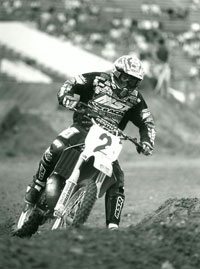 “Mike LaRocco was a tough competitor who gave it his all every time he got on the track,” said Ken Ford, a member of the Hall of Fame executive committee and treasurer of the AMA board of directors. “He was a huge fan favorite throughout his 19-year professional career.”
“Mike LaRocco was a tough competitor who gave it his all every time he got on the track,” said Ken Ford, a member of the Hall of Fame executive committee and treasurer of the AMA board of directors. “He was a huge fan favorite throughout his 19-year professional career.”
LaRocco said he was honored to be included in the Hall of Fame Class of 2014.
“You know, when I was racing, I was very focused on the competition, and the fan thing was a distraction,” LaRocco said. “But now, looking back, I recognize how important the fans are in making all this possible. And I appreciate the support they gave me.”
LaRocco began his professional racing career in 1988 at age 17 and retired in 2006 as the elder statesman on the circuit, totaling 228 Supercross starts. Along the way he collected AMA Motocross championships in the 1993 AMA 500 National Motocross Series and the 1994 AMA 250 National Motocross Series racing for Team Kawasaki. He also won the 2000 FIM Supercross World Championship.
“I used to be the guy who gave it everything I had every time I raced, through the whole race,” LaRocco said. “That was what made me successful — that I was always pushing myself for the entire race.”
LaRocco won Supercross races in three decades in two classes, 125cc and 250cc. He said the 1994 AMA 250 Motocross National Championship meant the most to him.
“At that time in my career, everything was going so smoothly, I felt like all my hard work had paid off,” he said.
His retirement in 2006 came after a broken wrist made him question his future in the sport.
“I wanted to stay healthy,” LaRocco said. “I found that I was not willing to take the same risks that the people who were winning were taking. Without the opportunity to win, my motivation just wasn’t there.”
Since 2010, LaRocco has managed the GEICO Honda Supercross/Motocross Team, which has won a title each year he has been involved.
“After I retired, I took a couple of years off,” LaRocco said. “But I was close to the guys who run this team, and it was a good fit. I learned a lot over my career, and I felt I had something to share.”
Rob Muzzy, tuner, engine builder and race team owner
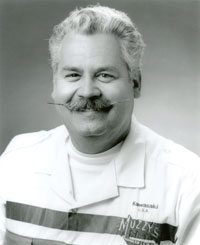 “Rob Muzzy’s successes stretch across seven decades, from his 1950s drag racing ventures to his current performance-products business and team ownership,” said Ken Ford, a member of the Hall of Fame executive committee and treasurer of the AMA board of directors. “Throughout his career, Rob’s determination, skills and strategies have proved effective, placing him and his race teams at the top of the motorcycle racing community.”
“Rob Muzzy’s successes stretch across seven decades, from his 1950s drag racing ventures to his current performance-products business and team ownership,” said Ken Ford, a member of the Hall of Fame executive committee and treasurer of the AMA board of directors. “Throughout his career, Rob’s determination, skills and strategies have proved effective, placing him and his race teams at the top of the motorcycle racing community.”
Muzzy was elated to learn of his election.
“I was really glad to get the call,” he said. “I know I was nominated three or for years ago, but didn’t get in. So I was pretty glad that I got the votes this time around.”
Muzzy got started in drag racing during the 1950s and raced dirt track as a novice in Southern California. He always built and tuned his own race engines.
“When it was time to move up to the next level — by then I was married and had a kid — I just decided that I wasn’t that serious about it,” Muzzy said. “I always had medium success as a rider. But I always had the quickest bike. So, the other guys were asking me to build engines for them. So moving from racing to tuning is just something that happened.”
Muzzy’s first shot at a performance business, in the 1970s, proved unsuccessful, largely due to an economic downturn at the time. So he responded to a Kawasaki ad for a motorcycle mechanic, landed the job and never looked back.
“That was the beginning of my real success, October 1980,” Muzzy said.
During the 1980s, Muzzy built and tuned engines for the Kawasaki and Honda racing teams. The Kawasaki team scored AMA Superbike championships in 1981, 1982 and 1983.
In 1984, Muzzy moved to Honda as crew chief for the team that won the AMA Grand National Motocross Championship. From 1985 through 1987, Muzzy-tuned machines won the 125cc AMA National Motocross Championship, the Daytona 200 and the AMA Superbike Championship.
Winning with Muzzy as crew chief or tuner were Hall of Famers Eddie Lawson, Ricky Graham, Scott Russell and Doug Chandler as well as Ron Lechien, Miguel Duhamel, Rickey Gadson and numerous others.
In January of 1988, at the strong urging of his wife, Muzzy re-opened his own business, producing engines and exhaust systems for racers.
“I just wanted an easy, 40-hour-a-week job someplace, but my wife convinced me that I should take advantage of my reputation and skills,” he said.
Toward the end of 1988, Muzzy learned that Kawasaki planned to release a new 750cc bike.
“I got in touch with them and said, ‘Gee, you ought to race that thing,'” he said.
Kawasaki agreed and provided Muzzy with “a very minimal budget” to build a race bike and hire a rider. He recruited Russell and Chandler, who subsequently finished first and second in the 1990 AMA 750cc Supersport Championship. Chandler also won the AMA Superbike Championship that year.
Kawasaki then asked Muzzy to run its FIM World Superbike team. He accepted, and the team won two world championships.
“Those were probably my most successful days,” he said of managing U.S. and world racing teams while running a full-time business. “But that almost killed me.”
Muzzy said the 1993 season was his most memorable, working with teams that won the AMA Supersport Championship and the FIM World Superbike Championship and notching Kawasaki’s first victory in the Suzuki 8 hours Endurance Road Race.
“To me, it doesn’t seem like anything I do is particularly outstanding,” Muzzy said. “I have a good eye for talent, when I can pick them, and I have been fortunate to work with a lot of really good talent, whether I picked them or not. We always have a strong team atmosphere, with everyone working toward the same goal.”
Muzzy Performance Products is still operating in Bend, Ore., and Team Muzzy is still racing.
Byron Hines, engine builder
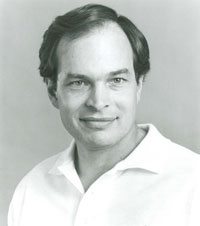 “One mark of exceptional talent is the ability to forge success regardless of your circumstances,” said Ken Ford, a member of the Hall of Fame executive committee and treasurer of the AMA board of directors. “As a tuner, Byron Hines has won in the 1970s, ’80s, ’90s and 2000s. He has won in drag racing and road racing. He has won on brands as different from each other as Yamaha, Ducati and Harley-Davidson. Few understand the ingredients to long-term success in motorcycle racing as well as he, and it’s my pleasure to welcome Byron Hines to the 2014 class of the AMA Motorcycle Hall of Fame.”
“One mark of exceptional talent is the ability to forge success regardless of your circumstances,” said Ken Ford, a member of the Hall of Fame executive committee and treasurer of the AMA board of directors. “As a tuner, Byron Hines has won in the 1970s, ’80s, ’90s and 2000s. He has won in drag racing and road racing. He has won on brands as different from each other as Yamaha, Ducati and Harley-Davidson. Few understand the ingredients to long-term success in motorcycle racing as well as he, and it’s my pleasure to welcome Byron Hines to the 2014 class of the AMA Motorcycle Hall of Fame.”
“Being inducted into the Hall of Fame is a huge honor, but it feels a little odd because I’m not done yet,” Hines said. “Being in a competitive arena, it seems like you’re never done. You’re going to keep doing what your doing and striving to be the best at what you do.”
Hines said his attraction to motorcycles came at an early age.
“I just always liked the physical size of the motorcycle,” he said. “Cars were too hard to work on and a lot of times you had to have someone with you to move stuff around. Also, I had this perception of motorcycles as being capable of a higher state of tune, and it was easier to make them go fast. To me, motorcycles just represented a more technologically advanced and capable package.”
Hines took full advantage of those capabilities, as well as his ability to unlock them. He found early success as a young tuner in the 1970s when he joined forces with motorcycle drag racer and AMA Motorcycle Hall of Famer Terry Vance. The pair earned national drag-racing championships into the 1980s, along the way leveraging their on-track achievements into the successful aftermarket company Vance & Hines.
The company branched into road racing in the 1980s, becoming one of the top AMA Pro Superbike teams, winning individual races as well as class titles, including the 1990 AMA SuperSport Championship with rider David Sadowski. In the late 1990s, they switched to Ducati and experienced further success with Anthony Gobert and Ben Bostrom at the controls. Today they compete in, and sponsor, the AMA Pro Racing Vance & Hines Harley-Davidson Racing Series, part of the AMA Pro Road Racing program.
Hines said that one element of his lasting success across disciplines and motorcycle brands has been an appreciation for the fundamentals of motorcycle tuning.
“There are principles of engine performance and operation that will always be there — basic cam timing, compression ratios, cylinder head porting, the basic concept of how engines are put together,” Hines said. “It’s part of the same foundation that we all build upon. There’s a certain set of rules, and you can’t break those rules. As soon as you go outside those boundaries, your performance is going to suffer.”
Vance & Hines, based in Santa Fe Springs, Calif., remains competitive in professional racing and continues to develop and sell aftermarket products for a wide range of motorcycles today. Hines is directly involved in all aspects of the business.
“What have been most important to me are the people I’ve run into, the acquaintances I’ve made and the relationships I’ve maintained,” Hines said. “I’m thankful to work someplace where everything just clicks, meeting the right people and having enough staying power to work out the kinks and have an opportunity to achieve what I want to achieve.”
Hall of Fame induction
The seven members of the 2014 Hall of Fame class will be inducted at the AMA Motorcycle Hall of Fame Induction Ceremony Oct. 17, in Orlando, Fla. The induction ceremony is part of the AMA National Convention being held in conjunction with the American International Motorcycle Expo (AIMExpo) Oct. 16-19. Tickets for the convention and the induction ceremony go on sale soon. Check back at www.motorcyclemuseum.org for updates.
AMA Motorcycle Hall of Famers are selected through a nomination and voting procedure that includes ballots cast by living Hall of Fame members, members of the American Motorcyclist Association and AMHF boards of directors, and members of, and advisers to, the Hall of Fame category committees.
To nominate a future Hall of Famer, visit: www.motorcyclemuseum.org/induction.


